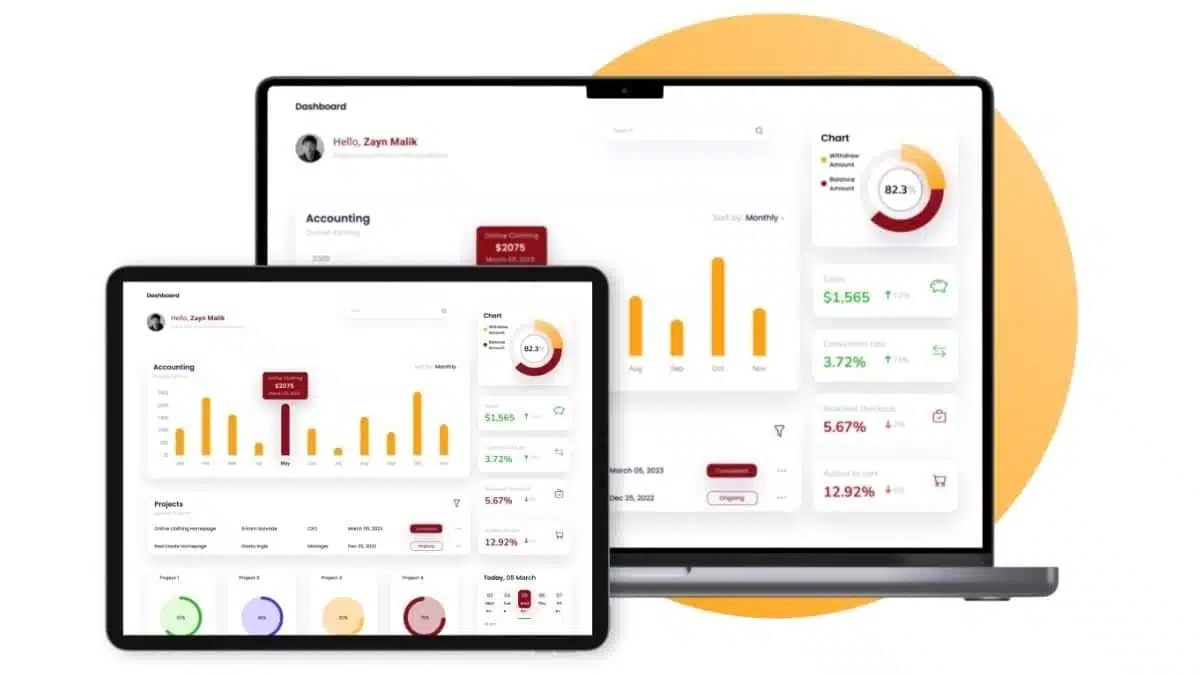Naranasan mo na bang pamahalaan ang isang proyekto kung saan ang pagsubaybay sa mga bayarin ay mas mahirap kaysa sa mismong trabaho? Progress billing offers a structured solution, enabling businesses to manage payments gradually while aligning them with project milestones.
Despite its benefits, progress billing can present challenges, such as unclear payment schedules, delayed follow-ups, and errors in invoice management. These issues often lead to disrupted cash flow and strained relationships between clients and vendors.
A recent report by BusinessWorld highlights how businesses in the Philippines struggle with inefficient billing systems, leading to 20% project delays due to payment disputes. Streamlined progress billing processes could mitigate these challenges and improve operational efficiency.
To explore how progress billing can transform your business and streamline your invoicing, continue reading. This article covers everything from the basics of progress billing to tips on leveraging software solutions for maximum efficiency.
Table of Content
Content Lists

Key Takeaways
|
What is Progress Billing?
Progress billing is a widely adopted approach for long-term projects, enabling sellers to invoice clients as specific milestones are completed. This method ensures steady cash flow for sellers and promotes transparency in financial transactions.
By allowing buyers to pay incrementally for goods or services, progress billing simplifies financial management for both parties. Unlike traditional payment systems, it provides a structured and predictable way to manage payments throughout the project’s duration.
Sellers outline payment terms and procedures upfront, which buyers follow to maintain smooth operations. Modern tools like eBilling platforms enhance this process by automating invoicing, ensuring accurate tracking, and delivering clear breakdowns for each project phase.
A common example is found in construction, where progress billing allows contractors to charge clients for completed stages, ensuring alignment with project milestones and efficient cash flow management.
Progress Billing Benefits

Progress billing offers a practical and efficient solution for managing payments in long-term projects. By breaking down costs into manageable stages, it benefits both clients and contractors, ensuring transparency and financial stability throughout the process.
Benefits for Contractors
1. Steady cash flow: Progress billing ensures contractors receive payments in defined increments, allowing them to manage expenses like materials, labor, and subcontractors more effectively. This steady influx of funds reduces reliance on loans, avoiding high-interest costs that can erode profit margins.
2. Simplified financial management: By breaking payments into manageable stages, contractors can budget accurately for each phase of the project. This structured approach ensures there are sufficient funds to maintain operations smoothly and keep projects on track.
3. Reduced risk of non-payment: Contractors are protected from completing an entire project without payment, as progress billing ties compensation to completed milestones. This encourages timely payments from clients and provides contractors the option to pause work if payments are delayed.
4. Easier resolution of payment issues: Progress billing systems make it simple for contractors to track when payments are due and identify discrepancies early. This transparency helps contractors address payment issues proactively, avoiding prolonged disputes.
5. Motivates client compliance: Tying payments to project milestones ensures that clients remain engaged and committed to fulfilling their financial obligations. This creates a collaborative environment where both parties work towards project completion.
Benefits for Clients
1. Reduced upfront costs: Clients are not required to pay a large lump sum upfront, making it easier to begin projects without significant financial strain. Instead, payments are spread out across milestones, offering flexibility and affordability.
2. Lower financial risk: Clients only pay for completed and approved work, minimizing the risk of investing in incomplete or substandard results. This method ensures that contractors remain accountable for quality and deadlines.
3. Encourages quality and timely work: Contractors are incentivized to meet milestones promptly to receive payments, while progress billing discourages rushed or low-quality work. Payments are only released when the client approves the work, ensuring satisfactory results.
4. Improved budget management: Spreading costs over the duration of a project helps clients allocate resources effectively. This structured payment method avoids financial surprises and supports better planning for long-term projects.
What does Progress Billing Include?
Progress billing is a detailed invoicing system that ensures transparency and accountability in projects. It includes key elements agreed upon by both contractors and clients, tailored to the project’s scope and funding needs.
Below are the definitive components commonly found in a progress billing format:
- Original contract amount: This is the agreed-upon total cost of the project, serving as the foundation for all billing calculations. It ensures all parties are aligned on the overall budget from the start.
- Total amount paid to date: This indicates how much the client has already paid, giving a clear view of completed transactions. It helps track the client’s financial commitment throughout the project.
- Percentage of work completed: The invoice specifies the percentage of the project that has been completed. This metric ensures that payments are directly tied to tangible progress.
- Approved changes and adjusted amounts: Any project changes or adjustments in scope are documented along with the revised amounts. This ensures the billing remains flexible while maintaining clarity.
- Client’s remaining balance: The invoice highlights the balance the client owes at the end of the project. This final figure allows both parties to manage their expectations and financial planning effectively.
Progress billing, often showcased in contractor progress billing samples, simplifies large-scale project management by keeping all stakeholders informed. Whether looking at a progress billing sample from the Philippines or internationally, this format ensures consistency and fairness.
The Difference between Progress Billing and Down Payment

The primary difference lies in the timing and purpose of the payments. Progress billing occurs during the project lifecycle, offering a transparent system to monitor work progress and financial commitments. In contrast, down payments act as a form of security deposit, allowing sellers to commence work or reserve resources with the buyer’s initial financial commitment.
Progress billing and down payment are common terms in business transactions, yet they serve distinct purposes. This refers to a payment system where buyers pay in installments based on the completion of goods or services.
In contrast, a down payment involves an initial payment made at the start of a purchase agreement, often before receiving the goods or services.
Progress billing ensures payments are tied to specific project milestones or percentages of work completed. This system provides flexibility for buyers while maintaining accountability for sellers, making it a preferred choice for long-term or service-based projects.
On the other hand, down payments are typically a one-time amount or percentage required upfront, securing the transaction before work begins or goods are delivered. Businesses should also consider investing in invoice software to streamline payment tracking and ensure the accuracy of transaction management.
Click the banner below to explore how the right invoice software can effectively transform your payment processes and meet your business needs.

Progress Billing Types
Progress billing offers several payment options tailored to suit different business needs and agreements. Each type provides unique advantages, making it easier for buyers and sellers to manage transactions effectively. Below are the common types of progress billing systems that highlight their flexibility and benefits.
1. End of Month (EOM)
This type requires buyers to settle payments by the end of the month, making it crucial to define the exact due date. The due date may either be the last day of the month or a specified date agreed upon by both parties.
This system is widely used for its simplicity, as it aligns payments with regular financial cycles. Businesses often prefer EOM to maintain a steady cash flow while ensuring predictable payment schedules.
2. n/30
Under this type, buyers are given 30 days from the date of receiving goods or services to complete the payment. For example, if the buyer receives the goods on January 1st, the payment will be due on January 30th.
This type offers flexibility, allowing buyers sufficient time to manage their finances while ensuring sellers receive payment promptly. Its straightforward terms make it one of the most common progress billing formats in various industries.
3. n/15 with EOM
This system combines flexibility with structured deadlines by requiring payment 15 days after the end of the month. For instance, a transaction on September 3rd would result in a payment due on October 15th.
This type is ideal for businesses that want to align payments with their monthly accounting cycles while providing a grace period for the buyer. It balances convenience for the buyer with timely cash flow for the seller.
4. 5/10, n/30
This type offers a discount incentive for early payments, encouraging buyers to pay 10 days before the due date. For example, a 5% discount might apply if the buyer pays early, while the full payment is still due 30 days after receiving goods or services.
Sellers can modify the discount percentage based on agreements, fostering mutual benefits. This approach not only accelerates cash flow for sellers but also rewards buyers for prompt payments.
Switching to a digital system, like a document management solution, simplifies handling these billing types. Digital tools allow businesses to easily share invoices, contracts, and supporting documents, making progress billing more efficient and paperless.
Progress Billing Function

Progress billing is essential for facilitating seamless transactions and efficient project management. It provides more than just a payment schedule, offering detailed documentation that ensures transparency, accountability, and trust between buyers and sellers.
Below are the key functions of progress billing that demonstrate its importance in various industries:
1. Reliable transaction record
Progress billing acts as a formal and reliable record of transactions, clearly documenting payments made and work completed. It minimizes disputes by providing clarity and serving as a definitive reference point in case of errors or misunderstandings. Its legal validity reinforces trust and ensures transparent collaboration in any project.
2. Clear work progress tracking
This system ties payments to actual project milestones, ensuring payments are made only as progress is achieved. Starting with an initial deposit and ending with the final payment upon completion, it offers a structured timeline that holds sellers accountable while assuring buyers of delivered results.
3. Efficient financial planning
Progress billing supports effective cash flow management by distributing payments across project milestones. Buyers avoid the strain of large upfront payments, while sellers benefit from a consistent income stream, enabling smoother operations and better resource allocation. This approach also reduces financial risks, ensuring security for both parties throughout the project.
How To Implement Progress Billing

Implementing progress billing requires a structured approach to ensure clarity, accuracy, and efficiency for all parties involved. By following a well-defined process, contractors and clients can align their expectations, streamline payments, and maintain accountability throughout the project.
Below are the essential steps to successfully integrate progress billing into your operations:
- Develop a schedule of values: Begin by creating a schedule that breaks down project tasks and their associated costs. This detailed list ensures both contractors and clients agree on the scope and estimated value for each stage, streamlining project management.
- Establish a payment schedule: Define the frequency and milestones that trigger progress payments in the contract. Assign a percentage of the total cost to each milestone to ensure payments align with actual work completed.
- Draft the contract: Collaboratively craft a contract that outlines the project scope, milestones, and payment terms in detail. This document serves as the foundation for implementing an accurate and reliable progress billing format.
- Commence the project: Start the project work based on the agreed timeline and milestones set in the contract. Contractors must ensure tasks are completed as scheduled to maintain trust and avoid delays.
- Submit an invoice: After completing a milestone, prepare an invoice based on the percentage of work completed. Use a progress billing sample to ensure the invoice aligns with industry standards and includes all necessary details.
- Customer review: Allow the client or lender to review the invoice for accuracy and ensure billed work matches expectations. This step helps address discrepancies early and maintains transparency.
- Invoice payment: Once approved, the client sends payment for the billed portion, minus any retainage if applicable. Timely payments help avoid work stoppages and support smooth project progression.
- End the project: Upon project completion, issue the final invoice that includes any remaining retainage. The client conducts a final review before making the last payment, completing the progress billing process.
This method ensures progressive billing remains transparent, organized, and efficient—providing clarity to both parties, as seen in contractor progress billing samples or progress billing samples from the Philippines.
Streamline Your Billing Process with HashMicro’s Advanced E-Invoicing Software

HashMicro is a leading provider of e-invoicing solutions designed to streamline billing processes and improve cash flow management. With its innovative technology and trusted reputation, HashMicro’s e-invoicing software empowers businesses to automate invoice creation, track payments, and ensure timely follow-ups with ease.
If you want to learn more about how HashMicro’s E-Invoicing Software can enhance your billing management, you can try the free demo provided by this vendor. Discover how this solution can simplify payment workflows, reduce manual errors, and support your business’s financial efficiency.
Why we recommend it: HashMicro’s e-invoicing software offers advanced tools to automate billing, such as scheduled invoicing, real-time payment tracking, and customizable templates. These features enable businesses to address invoicing challenges effectively, fostering smoother operations and improved client satisfaction.
HashMicro’s e-invoicing software provides exceptional features tailored to meet billing and payment needs, making it ideal for businesses looking to optimize their financial processes. Here are some key features offered:
- Invoice Generation: Easily create invoices using customizable templates, print them as PDFs, or send them via email for faster, error-free billing. This feature ensures smooth invoicing processes, timely payments, and better cash flow management.
- Tax & Discount Management: Automatically calculate taxes and apply discounts for accurate billing and tax compliance. This feature helps businesses offer competitive pricing while avoiding calculation errors.
- Online Payment Management: This feature enables customers to make payments quickly through secure online gateways, streamlining the payment process. It improves customer experience and accelerates payment collection.
- Credit Limit Management: Set and manage different credit limits for clients to mitigate financial risks. This feature reduces the chance of bad debts by maintaining tighter credit control.
- Invoice Approval & Validation: Automate the approval process for invoices with special prices or discounts, ensuring financial accuracy. This feature prevents unauthorized pricing changes and maintains control over billing practices.
- Real-Time Invoice Reporting: Access real-time reports on invoice aging and unpaid invoices to track accounts receivable. This feature helps improve cash flow by identifying overdue payments and prioritizing collections.
In addition, HashMicro’s e-invoicing software integrates seamlessly with various modules, such as accounting systems, to ensure smooth and efficient financial operations. Its customizable and user-friendly interface adapts to your business needs, empowering you to manage payments more effectively and focus on growth.
Conclusion
Progress billing is an efficient payment system that provides buyers with flexibility when settling payments for goods or services. This approach ensures payments are spread out over time while aligning with the progress of the work, meeting the buyer’s expectations seamlessly.
HashMicro, a leading ERP software provider in the Philippines, offers an advanced e-Invoicing Management System designed to simplify billing and payment processes. With its cutting-edge features, this software enables businesses to automate invoice creation, track payments, and maintain smooth cash flow effortlessly.
Nais mo bang malaman kung paano mababago ng HashMicro ang pamamahala ng iyong benta? Experience the benefits firsthand by scheduling a free demo of our software today!




































